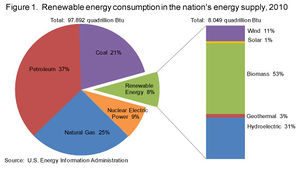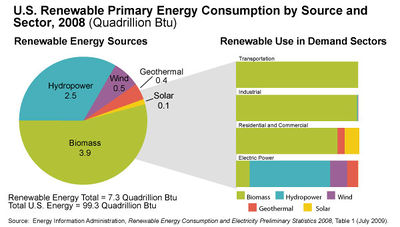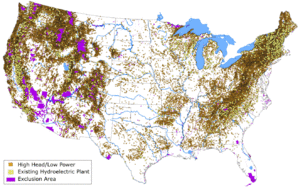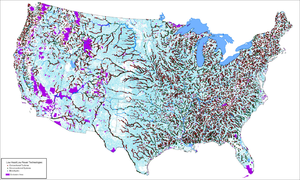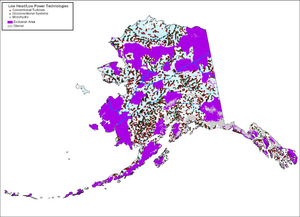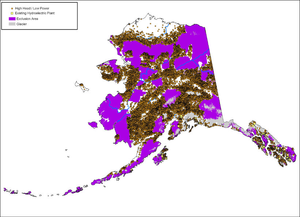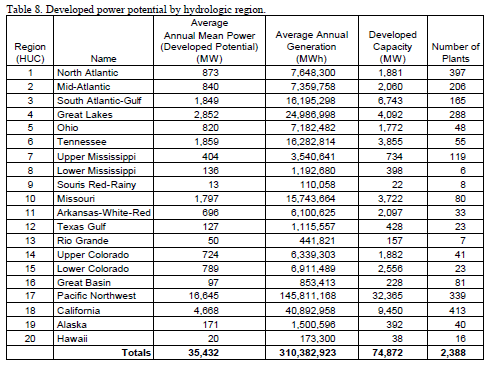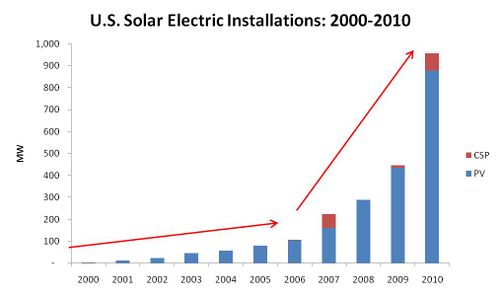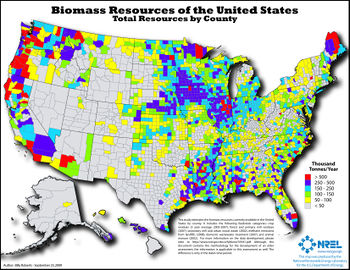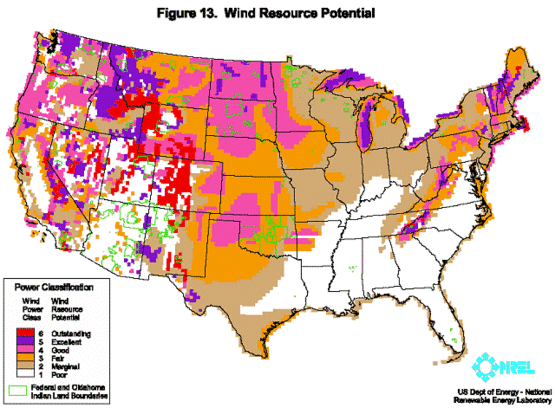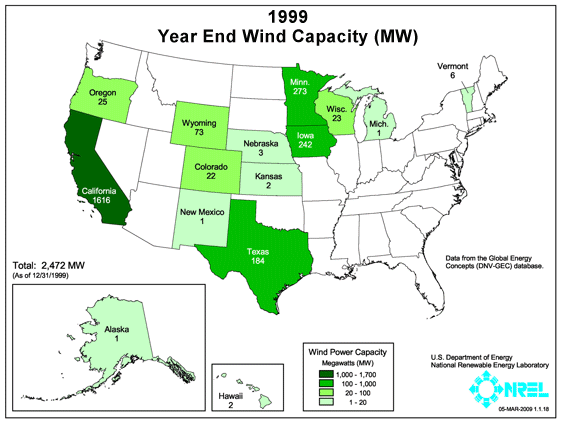United States of America Energy Situation
From energypedia
Revision as of 13:16, 11 April 2014 by ***** (***** | *****)
| The United States of America | |||
|---|---|---|---|
| Capital | Washington D.C 38°53'N 77°01'W | ||
| Official Languages(s) |
None at federal level | ||
| Government | Federal presidential constitutional republic | ||
| President | Barack Obama | ||
| Prime Minister | |||
| 'Total Area '( km²) | 9,826,675 [1] | ||
| Population | 313,206,000 (2012)[2] | ||
| Rural Population | 55,700,625 (2011)[3] | ||
| GDP (Nominal) | $15.065 trillion (2011)[4] | ||
| GDP Per Capita | $48,147 (2011)[5] | ||
| Currency | United States Dollar $ USD | ||
| Time Zone | (UTC- 5 to -10) Summer (DST) (UTC - 4 to -10) | ||
| Calling Code | |||
| Electricity Generation | 4,253.3 TWh/year (2009)[6] | ||
| Access to Electricity | 100% | ||
| Wind energy (installed capacity) | 43,635 MW (2011)[7] | ||
| Solar Energy (installed capacity) | 3,954 MW (2011)[8] | ||
Overview
Energy in the United States of America are produced from a variety of sources. The primary source of energy in the United States is coal at 42% in 2011.[9]
- Energy Production Estimates in Physical Units, United States, 1960 - 2009
- States Energy Consumption Estimates for Major Energy Sources in Physical Units, 1960-2009
Renewable Energy Sources
Hydropower
|
|
Existing hydroelectric plants and high head/low power water energy sites in the conterminous United States.[10]
|
|
Low head/low power water energy sites in the conterminous United States[11] | |
"The Alaska Region contains the largest total potential with its slightly less than 90,000 MW of potential, which is approximately 30% of the total power potential of the United States. The Pacific Northwest Region has the second highest amount of total potential with slightly more than 76,000 MW of potential. Together these two regions contain over half (55%) of the U.S. power potential. From the perspective of the largest percentage of total power potential that has been developed, the Great Lakes Region (66%) and the Tennessee Region (37%) are particularly noteworthy with the next highest regions being the Lower Colorado (23%), Pacific Northwest (22%), South Atlantic-Gulf (21%), and California (17%)."[12]
| Low-head-low power water energy sites in Alaska | |
| Existing hydroelectric plants and high head-low power water energy sites in Alaska |
Solar Power
Biomass
|
Total Biomass Resources of the United States by county. |
Wind Power
|
Wind Recouce Potential in the United States. | |
|
Progressive installed capacity animation. |
References
- ↑ "United States". The World Factbook. CIA. 2009-09-30. Retrieved 2010-01-05 (area given in square kilometers)
- ↑ U.S. POPClock Projection". U.S. Census Bureau. Figure updated automatically.
- ↑ http://www.tradingeconomics.com/united-states/rural-population-percent-of-total-population-wb-data.html
- ↑ United States". International Monetary Fund. Retrieved 2011-10-09.
- ↑ United States". International Monetary Fund. Retrieved 2011-10-09.
- ↑ http://www.energy.eu/stats/energy-electricity-production.html
- ↑ http://www.windpoweringamerica.gov/wind_installed_capacity.asp
- ↑ http://www.seia.org/galleries/pdf/SMI-YIR-2011-ES.pdf
- ↑ http://www.eia.gov/electricity/monthly/epm_table_grapher.cfm?t=epmt_1_1
- ↑ http://hydropower.inel.gov/resourceassessment/pdfs/03-11111.pdf (pg. 47)
- ↑ http://hydropower.inel.gov/resourceassessment/pdfs/03-11111.pdf (pg. 29)
- ↑ http://hydropower.inel.gov/resourceassessment/pdfs/03-11111.pdf (4.4 pg. 33)


